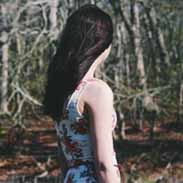AP Bio chap 19-25 – Flashcards
Unlock all answers in this set
Unlock answersquestion
What is the meaning of Darwin's expression "descent with modification"?
answer
Descent with modification refers to evolutionary change over time.
question
In 1959, doctors began using the powerful antibiotic methicillin to treat infections of Staphylococcus aureus, but within two years, methicillin-resistant strains of S. aureus (MRSA) appeared. How did the resistant strains of S. aureus emerge?
answer
Staphylococcus aureus bacteria that were able to synthesize cell walls using a protein that was not affected by methicillin survived the methicillin treatments and reproduced at higher rates than did other individuals. Over time, these resistant individuals became increasingly common.
question
What happened in the soapberry bug population in central Florida when the bugs began to feed on smaller goldenrain tree fruits?
answer
Bugs with shorter beaks had more access to food, allowing them to produce more offspring.
question
Identify the pair of homologous structures.
answer
Maple leaf and oak leaf
question
Phylogeny is the evolutionary history of related groups of organisms. Organisms are grouped into taxa based on homologous characteristics, shared traits that result from common ancestry. Which statement is true?
answer
The term "monophyletic" refers to a taxon that includes an ancestral species and all of its descendants.
question
Which of these are homologous structures?
answer
Ivy leaf and pine needle
question
This figure shows a phylogenetic tree of birds and their close relatives. Identify the monophyletic taxon.
answer
Birds and dinosaurs and their common ancestor
question
Select the correct statement about phylogenetic trees.
answer
Phylogenetic trees may expand quickly to maximum width and then narrow over time.
question
This phylogenetic tree was constructed by comparing sequences for a homologous gene involved in development. Select the correct statement.
answer
The nucleotide sequence of this gene in a mouse is more similar to the sequence in a chicken, and both are less similar to the nucleotide sequence of this gene in a frog.
question
You read about soapberry bugs and select the correct statement describing relative fitness in these individuals.
answer
A soapberry bug with high relative fitness has a relatively high number of offspring that survive to reproductive age.
question
The fruit fly Drosophila melanogaster has an allele that confers resistance to DDT and similar insecticides. Laboratory strains of D. melanogaster have been established from flies collected in the wild in the 1930s (before the widespread use of insecticides) and the 1960s (after 20 years of DDT use). Lab strains established in the 1930s have no alleles for DDT resistance. In lab strains established in the 1960s, the frequency of the DDT-resistance allele is 37%. Which statement is correct?
answer
The evolutionary fitness associated with the heritable trait of DDT resistance changed once DDT use became widespread.
question
One out of 10,000 babies born in North America is affected by cystic fibrosis, a recessive condition. Assuming that the North American human population is in Hardy-Weinberg equilibrium for this trait, what percentage of the population is heterozygous for this trait? (Remember the equation for a population in Hardy-Weinberg equilibrium: p2 + 2pq + q2 = 1.)
answer
2%
question
Allele frequencies in a gene pool may shift randomly and by chance. What is this random shift called?
answer
genetic drift
question
Which statement correctly describes the role of chance in evolution?
answer
The ultimate source of new alleles is mutation, random changes in the nucleotide sequences of an organism's DNA.
question
Three of the most prominent definitions of species are the biological species concept, the phylogenetic species concept, and the morphological species (morphospecies) concept. Drag each characteristic to the appropriate bin based on the species concept(s) to which it applies.
answer
Biological: not applicable for extinct species Morphological: relies on similarities in structure Phylogenetic: based on evolutionary history MandP: accomodates asexual reproduction; species acceptance criteria can be subjective MandPandB: used scientists in classification
question
What is genetic drift?
answer
A change in allele frequencies caused by random events
question
Why are the large finches now living on the Galápagos Islands different from the original source population from a nearby island?
answer
Natural selection favored individuals that were more fit in the new environment. The separation of habitats reduced gene flow between the populations. Genetic drift occurred in the two populations.
question
True or false? The last ice age produced many different species mainly because populations dispersed and colonized new habitats.
answer
False
question
Which of the following statements about reinforcement is true?
answer
Reinforcement is a type of natural selection.
question
A subset of a population of birds leaves its habitat on the mainland and colonizes a nearby island. The birds, after a period of time, become reproductively isolated. The island sinks and the population of birds that lived on the island returns to its original habitat. Which of the following statements about these bird populations is true?
answer
The populations will not be able to interbreed because they are different species.
question
A population of birds colonizes an area in which the insects upon which they feed live inside trees. Which of the following events accounts for an observed increase in average beak size in the bird population over time?
answer
Increased fitness of large-beaked birds, leading to natural selection
question
True or false? A flood that separates a population of frogs onto opposite sides of a lake is an example of a vicariance event that may result in allopatric speciation.
answer
True
question
Of the 59 matings in the experimental groups, how many were between like-adapted flies (flies adapted to the same medium)?
answer
...



